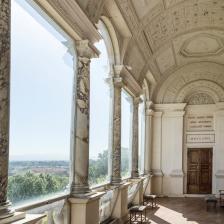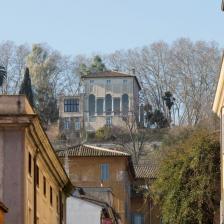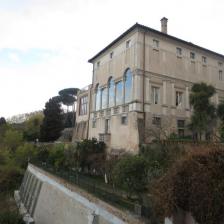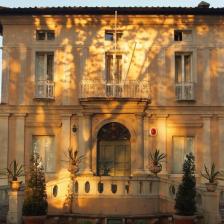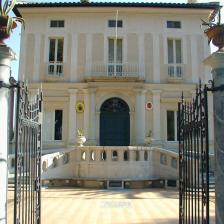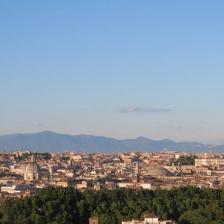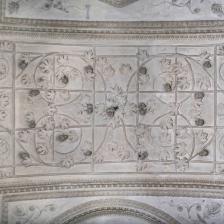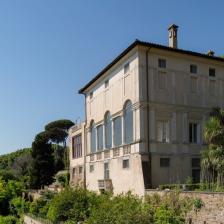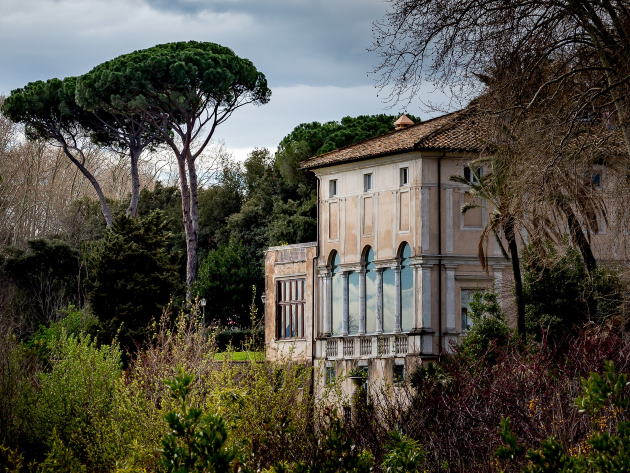
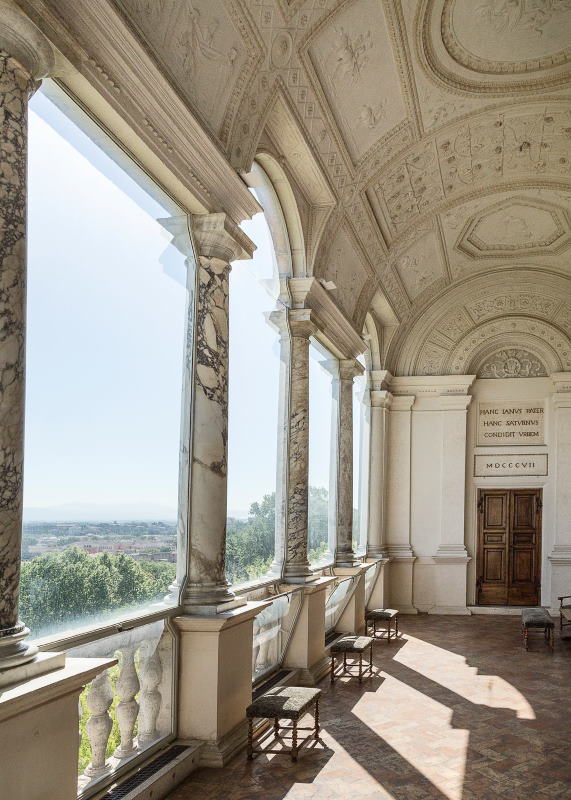
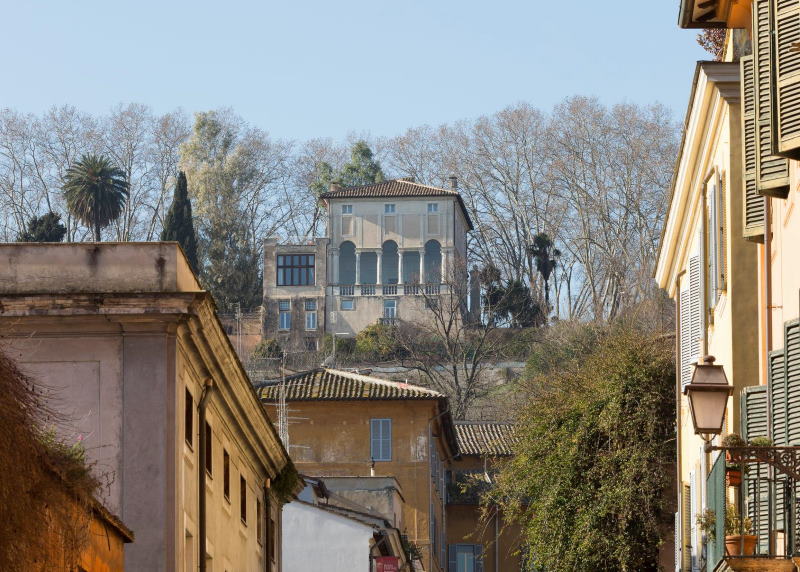
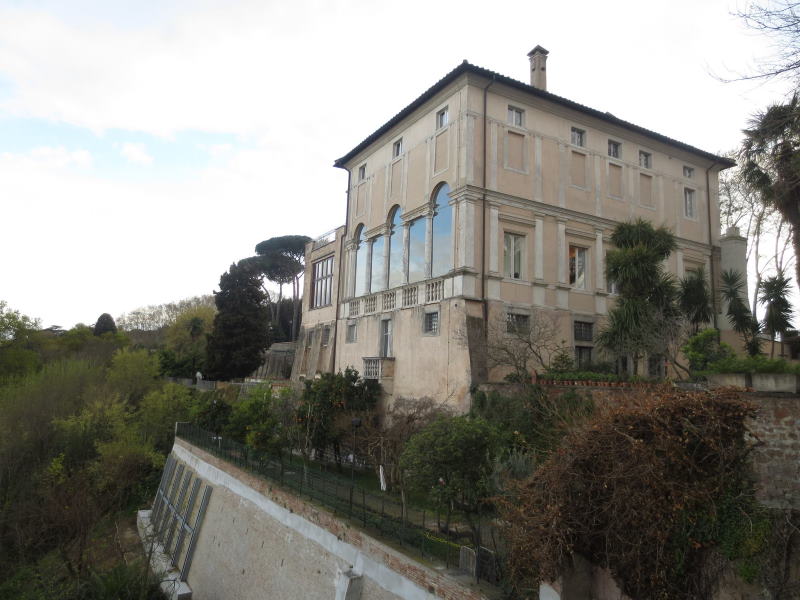
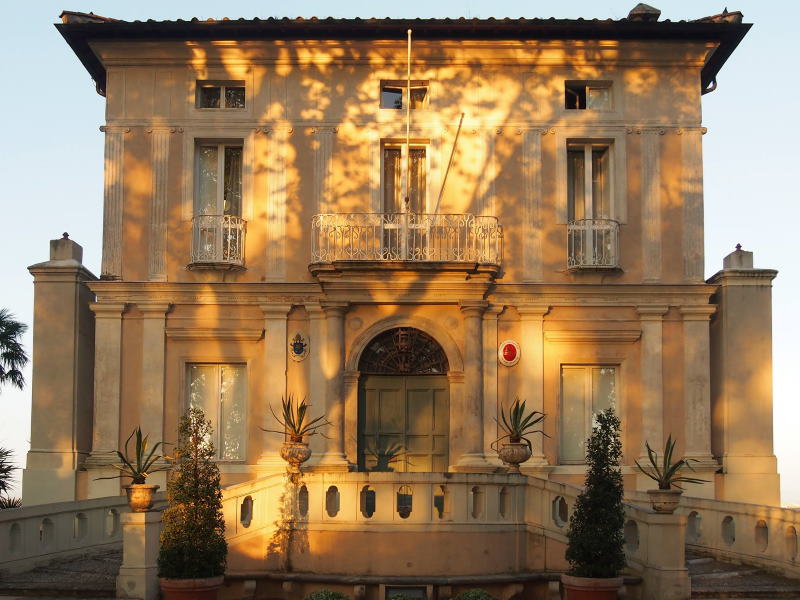
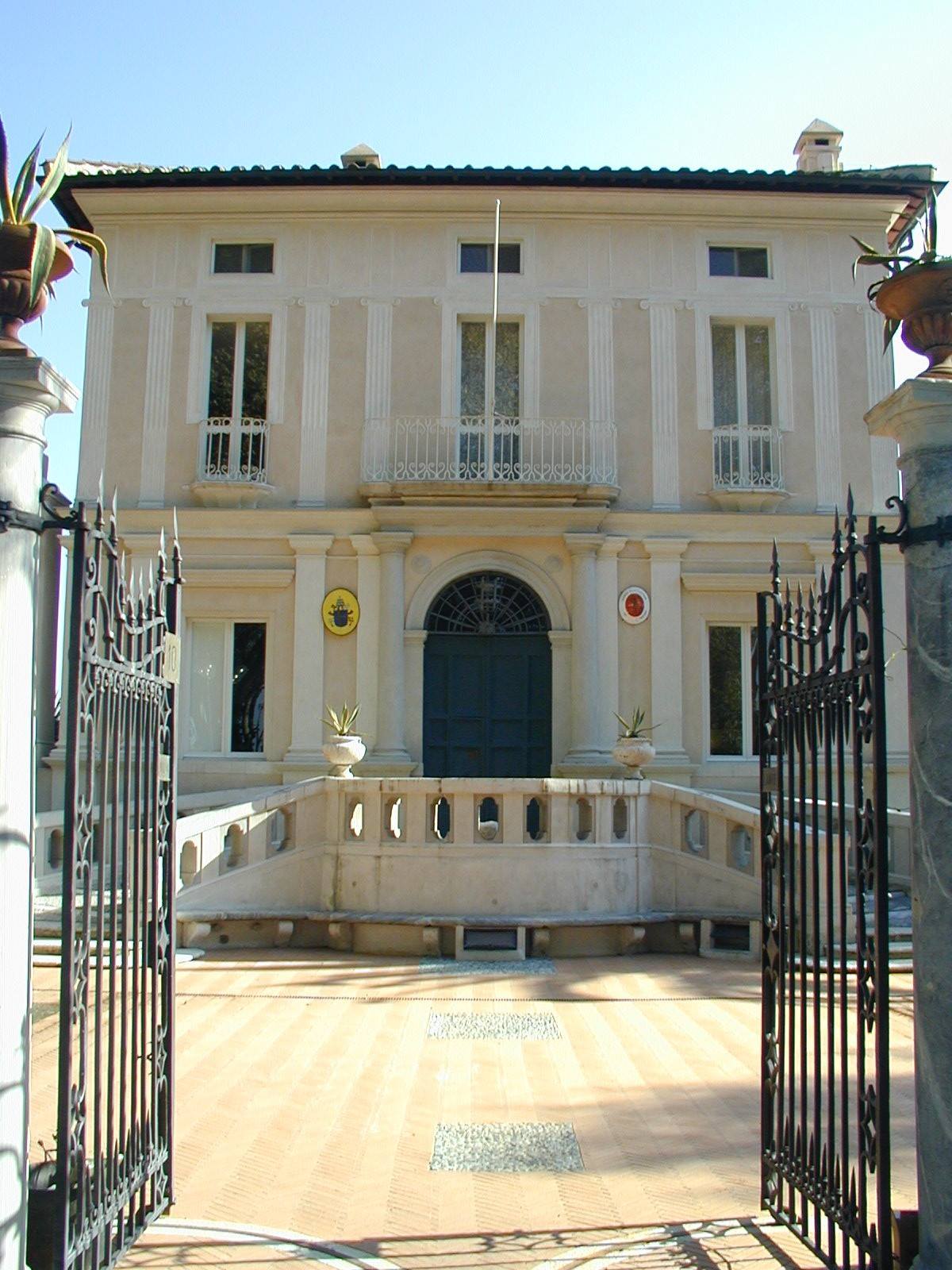
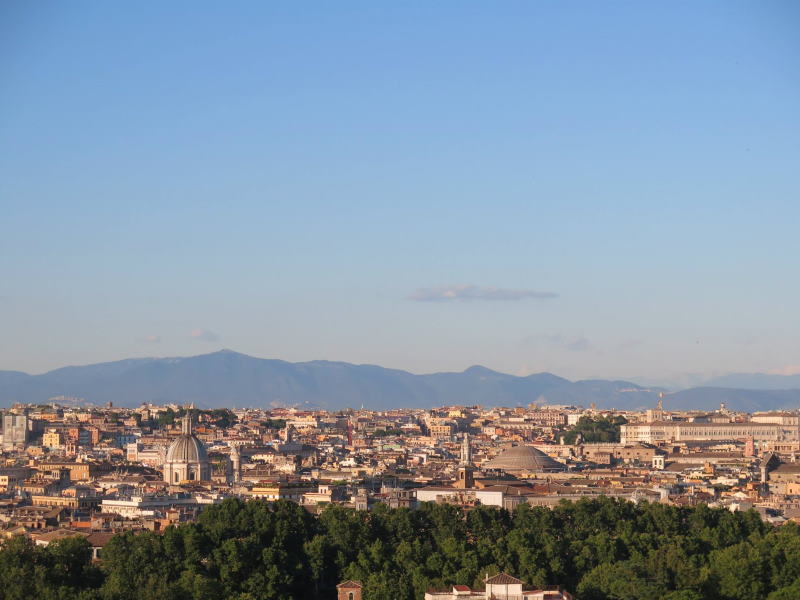
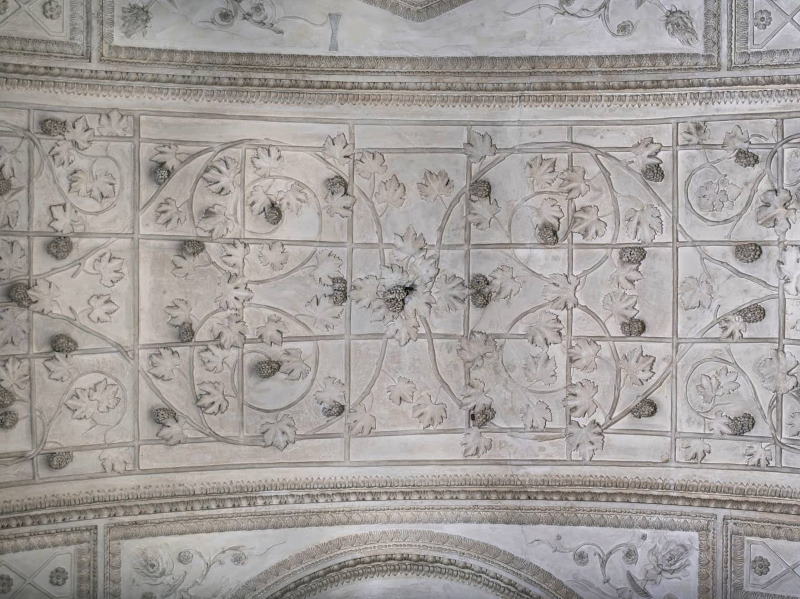
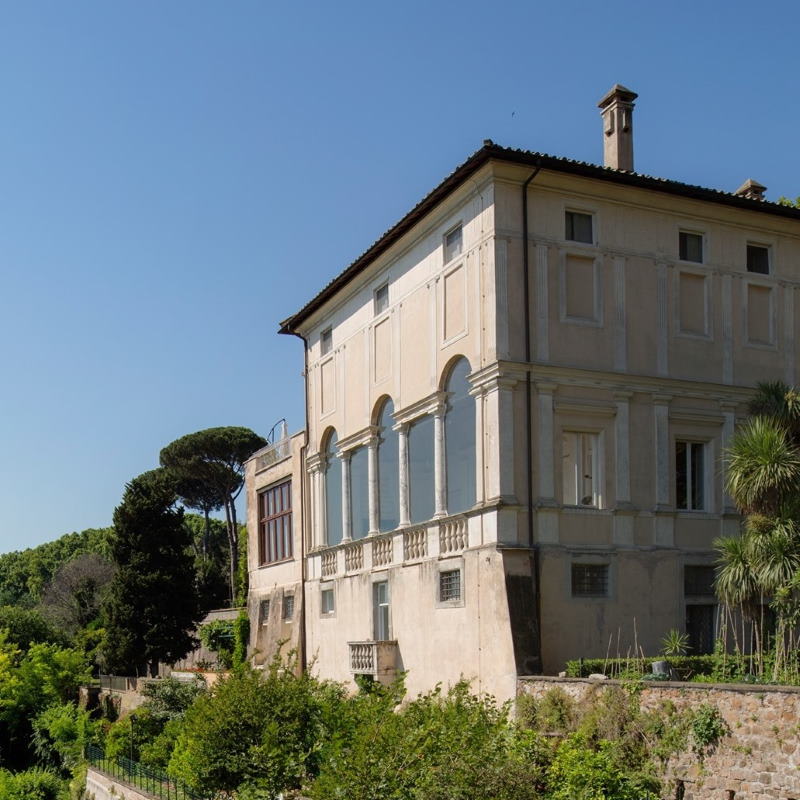
Die Villa Lante al Gianicolo ist eine der am besten erhaltenen römischen Villen aus dem 16. Jahrhundert. Zusammen mit der Villa Madama ist sie ein wertvolles Zeugnis der Arbeiten der Schule Raffaels und des „neuen goldenen Zeitalters” der Päpste Medici. Die Villa mit Blick auf Rom wurde zwischen 1518 und 1525 von einem bedeutenden Beamten toskanischer Herkunft, Baldassarre Turini (Datar und Sekretär der Päpste Leo X. und Clemens VII.), erbaut, der sich ein Sommerhaus wünschte, um der Hitze der Stadt zu entfliehen.
Die Architektur ist Giulio Romano, dem Lieblingsschüler Raffaels, zuzuschreiben, der bei den Dekorationen von Giovanni da Udine, Polidoro da Caravaggio, Vincenzo Tamagni und Maturino unterstützt wurde. Das Ergebnis ist ein ausgewogenes und proportioniertes Bauwerk, das Architektur, Malerei und Skulptur perfekt miteinander verbindet. Die Villa wurde wahrscheinlich während der Plünderung Roms durch die Landsknechte beschädigt, wie die berühmte Inschrift im Salon beweist: „A dì 6 de magio 1527 fo la presa di Roma” (Am 6. Mai 1527 wird Rom eingenommen). Das Datum 1531 in der Loggia dürfte das Ende der Wiederaufbauarbeiten anzeigen.
Im Jahr 1551 ging das Anwesen an die Familie Lante über, von der es seinen Namen erhielt, den es trotz zahlreicher späterer Eigentümerwechsel bis heute beibehalten hat. Um die Wende vom 19. zum 20. Jahrhundert lebten dort der bekannte deutsche Archäologe Wolfgang Helbig und seine Frau, die russische Prinzessin Nadine Šachovskaja, die es zu einem kulturellen Salon machten, der von Adligen und Königsfamilien, Literaten und bedeutenden Musikern wie Carducci, D’Annunzio, Tolstoi und Wagner frequentiert wurde. 1950 wurde das Anwesen an Finnland verkauft und beherbergt heute die finnische Botschaft beim Heiligen Stuhl sowie das Institutum Romanum Finlandiae, ein Forschungsinstitut für klassische Kultur.
Das Gebäude wurde auf den Überresten einer früheren römischen Villa (möglicherweise der des lateinischen Dichters Martial) errichtet und zeichnet sich durch eine architektonische Struktur aus, die aus einer toskanischen Säulenordnung, einer ionischen Säulenordnung im ersten Stock und einem Attika mit einfachen Feldern besteht. Neben der schönen Renaissancefassade, wenn auch mit späteren Anpassungen, sind sicherlich der große Empfangssaal und die herrliche Loggia mit Blick auf die Stadt und raffinierten Stuckarbeiten, die Giovanni da Udine zugeschrieben werden, von bemerkenswertem Wert. Der Vorraum, der in den Salon führt, ist mit einem Triumph Roms von Valentin de Boulogne und über den Türen mit Hochreliefs von Antonio Canova geschmückt. Zwei Säle wurden von Vincenzo Tamagni (1525-27), möglicherweise nach Entwürfen von Giulio Romano, mit Kopien berühmter Porträts von Raffaello (die Fornarina, die Velata), Musen und berühmten Persönlichkeiten freskiert. Als die Villa 1837 vom Orden des Heiligen Herzens erworben wurde, wurden einige der Fresken im Salon mit Amoretten, Gottheiten und Geschichten zum Janiculum als für die behandelten Themen ungeeignet erachtet. Sie wurden daher entfernt und schließlich von Henriette Hertz für den Palazzo Zuccari erworben.
Die Villa kann in der Regel freitagsvormittags besichtigt werden. Das Institut organisiert außerdem Konferenzen, Seminare und Konzerte für das römische und internationale Publikum.
Informationen
To visit Villa Lante, please check the official website
 Condividi
Condividi
Location
Um mehr über alle barrierefreien Dienste zu erfahren, besuchen Sie den Abschnitt barrierefreies Rom.












































